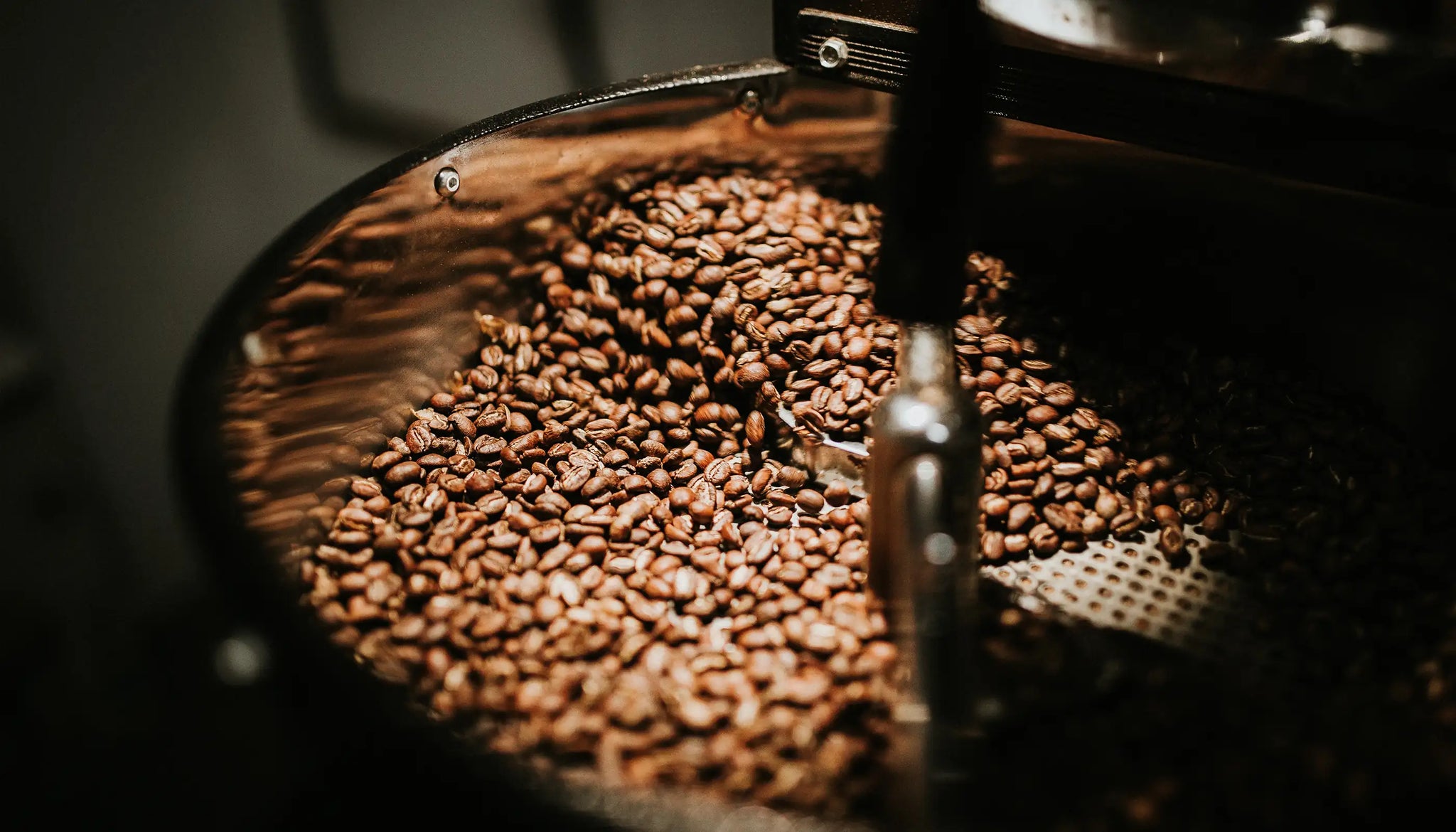Enjoying Food and Desserts with SOE Single Origin Espresso
Wiki Article
Understanding Coffee Beans: the Journey From Espresso to Blended Coffee Beans

The Origins of Coffee: A Global Perspective
While you may assume of coffee as a modern-day staple, its origins map back centuries, intertwining with societies across the globe. The tale begins in Ethiopia, where tale says a goat herder named Kaldi found the invigorating effects of coffee beans after noticing his goats frolicking energetically after eating them.As trade routes increased, coffee made its way to Europe in the 17th century, rapidly obtaining appeal. Each culture added its distinct twist to coffee preparation, enriching its history.
Growing and Harvesting of Espresso Beans
As coffee's trip advanced, the focus moved to the cultivation and harvesting of particular bean selections, particularly those used for espresso. You'll find that espresso beans typically come from Arabica or Robusta plants, each offering distinctive flavors. The suitable growing problems consist of high elevations and rich, well-drained soil, which boost the beans' top quality.During the harvest, selecting techniques differ. In some areas, employees hand-pick ripe cherries, ensuring just the ideal fruit goes to handling. In various other areas, mechanical farmers are utilized, especially on larger ranches. Timing is essential; you wish to collect when the cherries reach peak ripeness for optimum taste.
Once gathered, the beans are gotten ready for processing, which is vital in establishing their last taste. Comprehending the farming and harvesting processes gives you understanding into what enters into your preferred espresso, enriching your admiration for each and every mug.
Handling Methods: From Cherry to Bean
Since you have actually found out about collecting espresso beans, allow's discover exactly how those cherries transform right into the coffee beans you love. You'll see exactly how various harvesting techniques influence flavor, complied with by the crucial actions of fermentation and drying. We'll damage down the milling and grading process that identifies your coffee's top quality.Collecting Methods Discussed
When it comes to coffee, recognizing harvesting methods is vital, since they straight affect the taste and high quality of the beans you appreciate. Selective picking involves hand-picking just ripe cherries, guaranteeing you obtain the finest quality beans. Eventually, the selection of harvesting method can greatly influence your coffee experience, so it's worth knowing just how those beans made it to your cup.Fermentation and Drying Out
After harvesting, the following action in handling coffee beans play a substantial role in shaping their taste. You'll discover that fermentation is important, as it aids break down the mucilage bordering the beans, improving their preference account. Depending on the method, this process can last from a couple of hours to several days, with differing results based upon temperature level and humidity.Sun-drying enables the beans to soak up tastes from the atmosphere, while mechanical drying out warranties consistent wetness levels no matter of climate. Proper drying is essential to avoid mold and mildew and protect the beans' quality, ultimately affecting your cup of coffee.
Milling and Grading Process
As fermentation and drying set the stage for flavor advancement, the milling and grading procedure warranties that just the ideal coffee beans make it to your cup. This phase entails eliminating the external layers of the coffee cherry, consisting of the parchment and husk. Top notch beans get a higher grade, resulting in a richer coffee experience.Toasting Strategies: Unlocking Taste Prospective
When you roast coffee beans, the approach you select can significantly impact the taste account. Recognizing the partnership in between time, temperature, and roasting methods is crucial to disclosing the possibility of your brew. Let's explore just how these components come together to create the perfect mug.Roasting Techniques Clarified
While you might assume that all coffee roasting approaches yield the very same results, the fact is that each method discloses distinct taste potentials in the beans. Drum toasting uses a revolving drum to evenly disperse warm, boosting caramelization and creating a balanced taste. Air roasting, on the other hand, distributes hot air around the beans, promoting a lighter roast with pronounced level of acidity.
Effect On Flavor Account
Various roasting techniques not just influence the procedure however additionally greatly influence the flavor account of the coffee beans. When you pick a light roast, you'll experience intense level of acidity and flower notes, showcasing the bean's origin. On the other hand, a tool roast equilibriums level of acidity with sweet taste, typically disclosing chocolatey undertones. Dark roasts, on the various other hand, draw out bold, smoky flavors, sometimes masking the bean's distinct qualities. Each technique discloses different oils and compounds, leading to a variety of tastes. By trying out various roasting styles, you can uncover which profiles resonate with your palate. Comprehending these subtleties aids you value the creativity behind your mug of coffee, improving your total experience with every sip.Time and Temperature Factors
To launch the full taste possibility of coffee beans, both time and temperature level throughout the roasting process play significant roles. When toasting, you'll discover that higher temperatures can rapidly develop tastes, however if you rush it, you could end up with burnt notes. Conversely, reduced temperature levels permit for a more gradual flavor growth, showcasing the beans' unique attributes.
Timing is equally as crucial; extending the roast too long can lead to a loss of acidity and illumination, while too brief a roast could leave the beans underdeveloped. Locating that sweet spot calls for practice and experimentation. By adjusting these elements, you can expose the rich, complicated tastes hidden within each bean, creating a genuinely remarkable coffee experience.
The Art of Blending: Crafting Unique Coffee Profiles

Beginning by selecting a base coffee that gives a solid structure. Choose complementary beans to boost particular flavor notes. A brilliant Ethiopian bean can bring fruitiness, while a rich Brazilian coffee includes body. Testing is vital-- do not hesitate to adjust ratios until you locate your excellent account.
As you blend, bear in mind that each mix tells a tale. You're not simply making coffee; you're creating an experience. So, take your time, taste regularly, and delight in the journey of discovering your signature blend.
Developing Approaches: Just How Prep Work Impacts Flavor
Blending coffee opens up a domain name of flavor possibilities, yet exactly how you brew that blend can considerably affect your final mug. On the other hand, a pour-over highlights the coffee's quality and brightness, ideal for showcasing delicate notes.Coffee, with Look At This its high pressure, creates a concentrated shot that emphasizes sweetness and crema. If you prefer a lighter brew, take into consideration a cold mixture method; it generates a smooth, much less acidic preference.
Ultimately, experimentation is crucial. Adjusting variables like water temperature, grind size, and brew time can change your coffee's account. Accept the art of brewing to find the tastes concealed in your coffee blends. The right technique can boost your experience to brand-new elevations.
The Future of Coffee: Sustainability and Advancement
As the coffee industry develops, sustainability and development are becoming crucial for resolving ecological difficulties and conference customer needs. You'll notice that more coffee companies are adopting environment-friendly techniques, from sourcing beans ethically to executing lasting farming strategies. These changes not just help the planet but likewise boost the high quality of the coffee you enjoy.You might see technologies like biodegradable packaging and water-saving developing approaches that decrease waste. Advanced innovation, such as blockchain, is likewise coming to be popular, ensuring openness in the supply chain, which permits you to map your coffee back to its beginnings.
On top of that, purchasing important link regional neighborhoods and sustaining farmers via fair trade initiatives fosters an extra lasting coffee environment. As you sip your following cup, keep in mind that your options can add to a brighter future for coffee. By selecting lasting brand names, you're not simply enjoying a drink; you're making a positive effect on the globe.
Often Asked Questions
What Is the Distinction In Between Arabica and Robusta Beans?
Arabica beans are smoother, sweeter, and have a higher level of acidity, while robusta beans are more powerful, much more bitter, and contain even more caffeine. You'll discover these distinctions in taste and aroma when making your coffee.Just How Does Elevation Affect Coffee Bean Taste?
Altitude effects coffee bean flavor considerably. Greater elevations generate beans with brighter acidity and facility flavors, while reduced altitudes frequently produce beans that are much heavier and less nuanced. You'll observe these differences in your mug!What Are the Health And Wellness Benefits of Alcohol Consumption Coffee?
Consuming coffee can increase your power, improve mental focus, and also enhance physical efficiency. It's rich in antioxidants, might lower the danger of particular illness, and can advertise a healthier metabolic process when eaten in moderation.Can Coffee Beans Be Recycled for Brewing?
Yes, you can reuse coffee beans for developing, yet the flavor might be weaker. If you appreciate exploring, attempt reusing them in different means, like chilly brews or contributing to smoothie mixes for an extra kick.Just how Should I Store Coffee Beans for Quality?
To keep your coffee beans fresh, store them in a closed container in an amazing, dark place. Stay clear of subjecting them to heat, light, or dampness, as these factors can rapidly weaken their flavor and scent.Comprehending Coffee Beans: the Trip From Coffee to Blended Coffee Beans.
Currently that you've learned regarding collecting espresso beans, let's check out exactly how those cherries change right into the coffee beans you enjoy.When you roast coffee beans, the approach you pick can considerably influence the taste account - Single Origin Espresso.While you may believe that all coffee toasting methods yield the exact same results, the truth is that each method discloses special flavor possibilities in the beans.Various toasting approaches not just influence the process but also greatly affect the taste account of the coffee beans
Report this wiki page